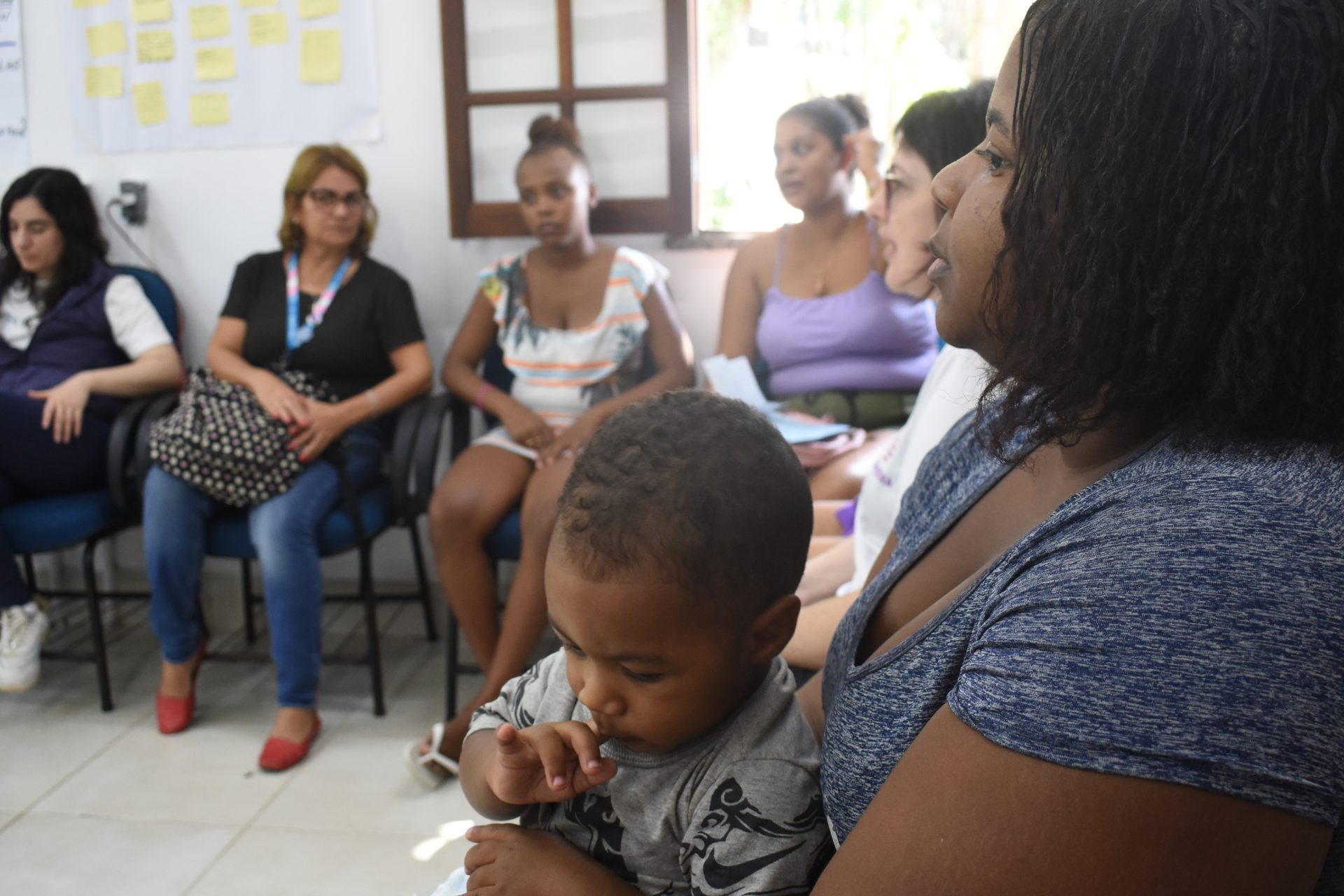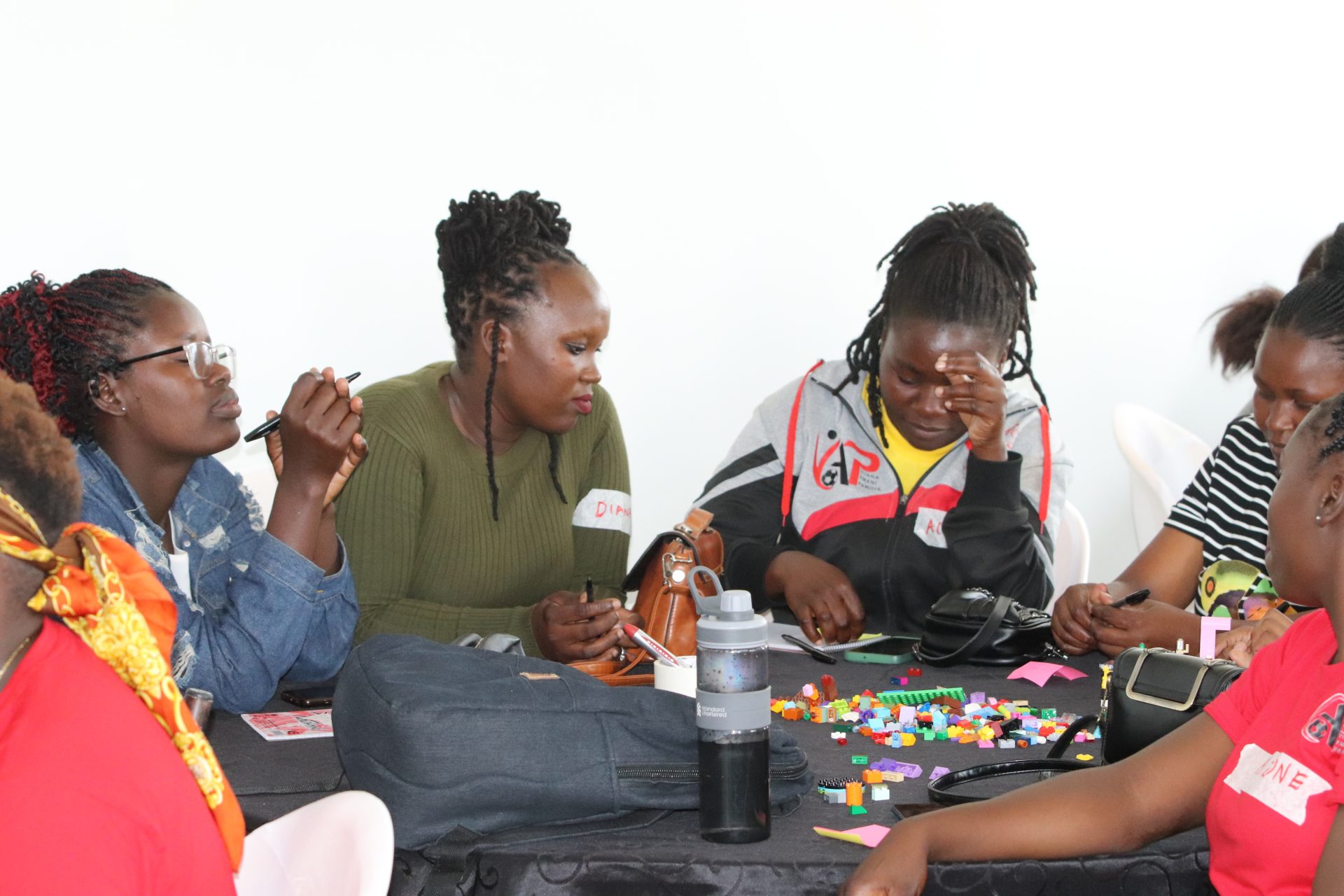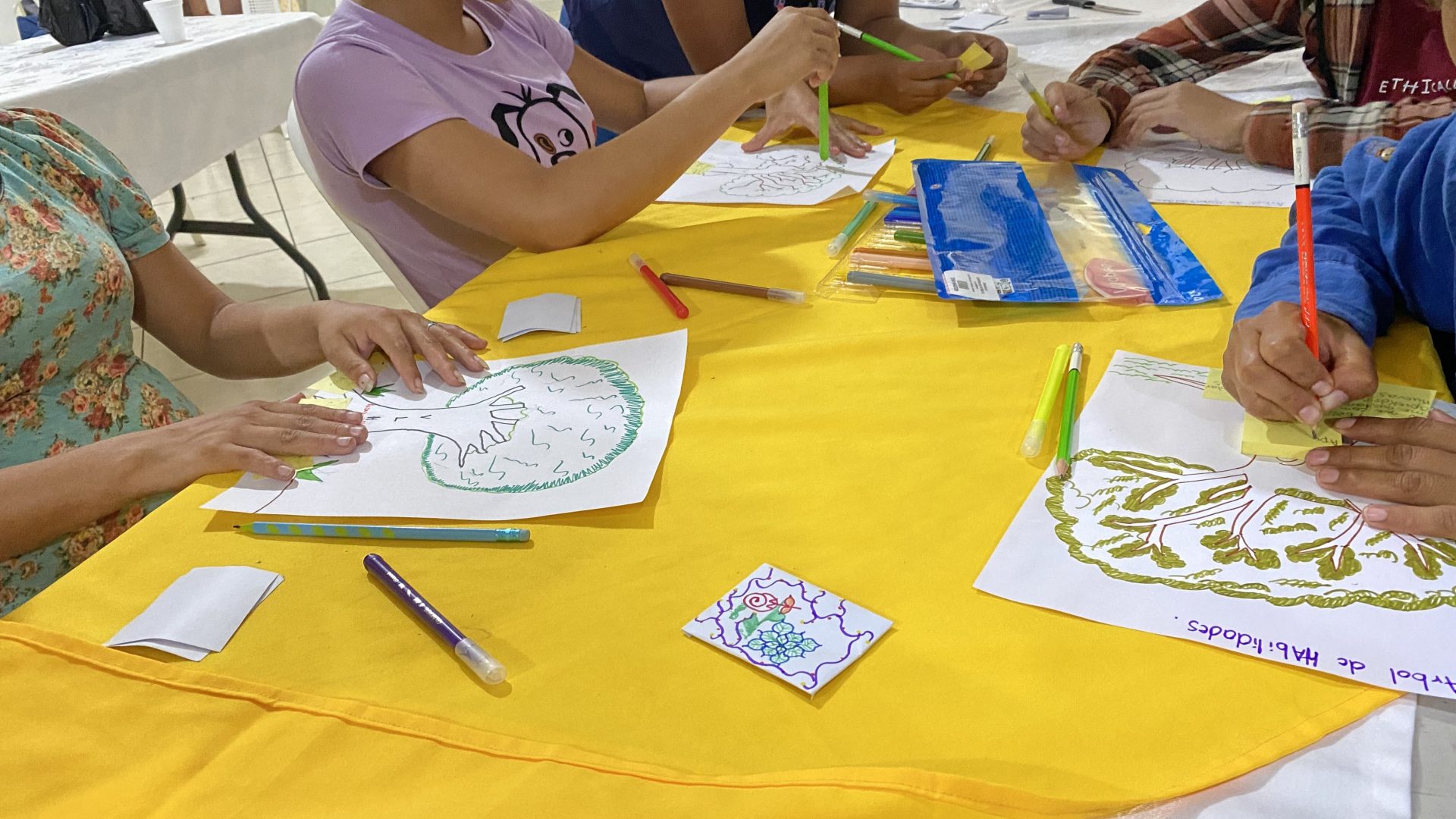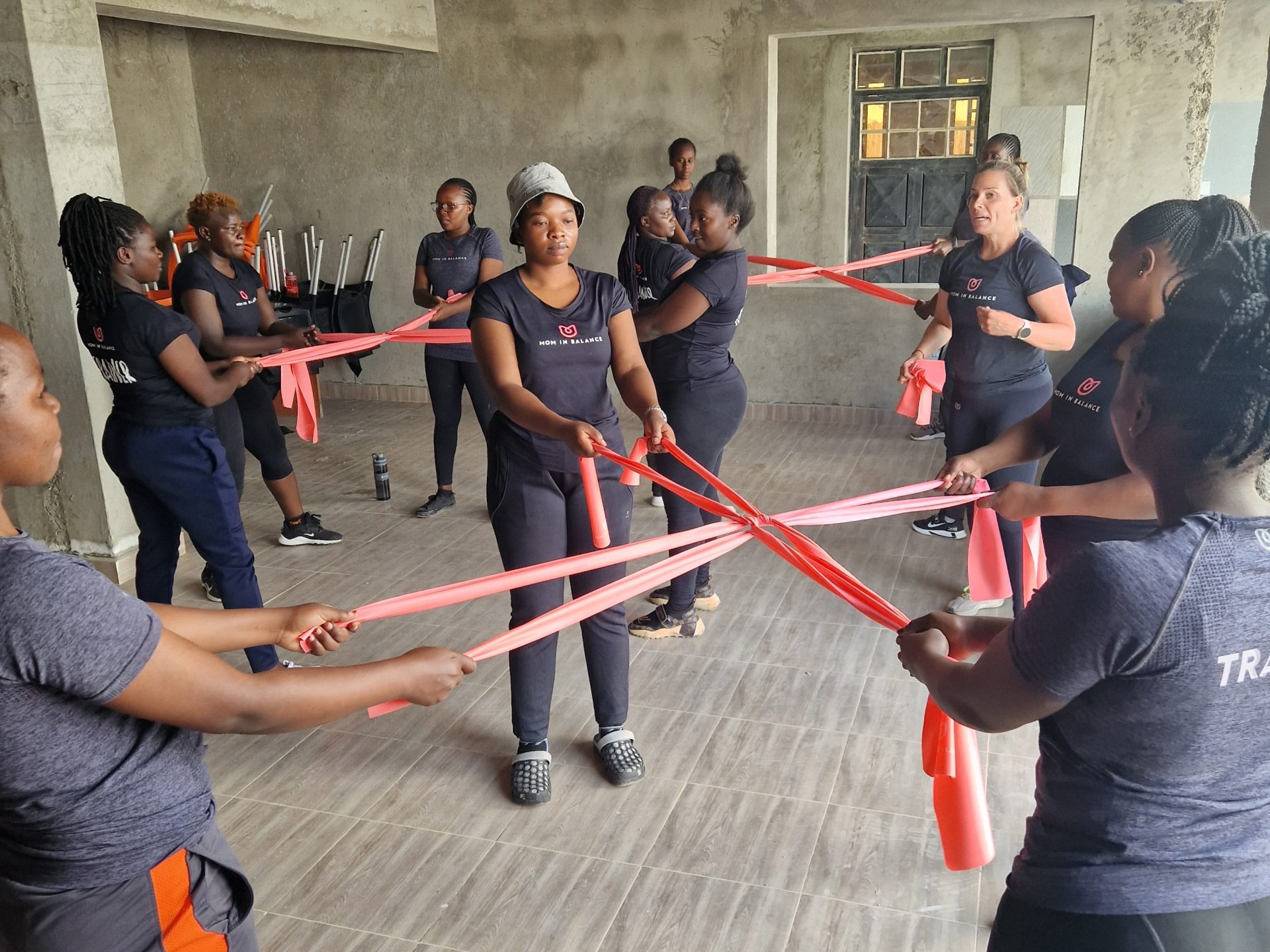Secure Futures: The Value of Co-Design
Teenage pregnancy remains a pressing global concern. Adolescent girls are disproportionately affected by the social and climate crisis, which result in higher barriers to education, less access to health services, increased gender-based violence, more migration and higher rates of early/forced marriage. All these factors are closely related to teenage pregnancy, meaning that if current trends continue, many places around the world could start to see significantly higher adolescent birth rates.
While many programmes focus on the prevention of teenage pregnancies, the gap remains in offering support to those young women who are already pregnant or mothers. The Secure Futures programme responds to the needs of this specific group, as pregnant adolescent girls and young mothers themselves define those needs. The programme is implemented by local partners Asociación AMA in Guatemala, Empodera in Brazil, and Vijana Amani Pamoja (VAP) in Kenya, with technical and capacity-building support by Mom in Balance and Women Win.
Piloted in Kenya from 2020-2022, Secure Futures is scaling up in 2024 with foundational support from the Dutch Nationale Postcode Loterij. The growth of the programme is enabled by partners’ local expertise and its success is strengthened by the use of participatory and contextualised programme design. By making use of co-design approaches, partners, participants, and other stakeholders actively take part in creating and adapting the programme. To ensure the programme responds accurately and timely to the real needs of pregnant adolescent girls and young mothers in differing contexts, co-design will be revisited by partners throughout the implementation of Secure Futures. This way, it will remain relevant, effective and ultimately have greater impact.

What is Co-Design?
Co-design is the process of actively engaging individuals and communities, as experts of their own lived experiences, in the design of the programmes set to benefit them. It places participants as equal collaborators and goes beyond mere consultation of future participants and communities, avoiding simple extraction of information. Co-design is important when designing new programmes, as well as when adapting existing programmes to new contexts and/or target groups, as in the case of Secure Futures.
Since the existing Secure Futures strategies were designed for the Kenyan context, in 2024 each implementing partner conducted an in-depth needs assessment to understand how the programme should be adapted for its expansion and new geographies. This ensured that organisations understand where is the programme needed the most and by whom. It provided insights into what resources are currently available and what kind of support is lacking. Finally, to further refine the programme design, implementing partners organised multi-day co-design workshops with future participants and key stakeholders.
For example, Asociación AMA adapted the existing Secure Futures strategies to be effective for rural Guatemala. Through co-design, they were able to get closer to their target population, understand their realities and refine existing strategies. For example, AMA adapted the frequency and duration of the programme based on the far distances and travel difficulties between villages, as well as the demands on the young mothers’ time. “Co-design gave us the opportunity to hear first-hand the experiences and needs of the participants, which allowed us to design a more relevant program tailored to their contexts, ensuring that the proposed solutions are truly useful and sustainable,” says the AMA team.
Learning from the participants, Empodera included topics of obstetric violence, racism, and sexual orientation in the programming. These additions were based on the stories and information requests from the young women consulted during the co-design process. VAP started hosting family forums, which engaged not only the girls’ partners, but also their mothers, fathers, sisters and grandparents, as there was a need for support from the broader family structure. Following the initial co-design sessions, all three partners noted the institutional challenges with accessing quality care, as well as the need to focus heavily on the violence and trauma disclosed by many of the girls during co-design. These needs might not have been addressed if not for the participation of girls and young women in co-design.

Co-Design in Practice
Co-design processes prioritise collaboration with partners and centre young women not only as receivers of support but also as holders of the knowledge on the kind of support and resources needed. Implementing organisations employed playful methodologies, sports, movement, group work, art, theatre, and open conversation to gather information on the pregnant girls’ and young mothers’ needs.
For one of their co-design activities, AMA team prepared a series of statements related to motherhood and pregnancy that they read out loud to the participants. The participants then chose an emoji which they felt best represented their emotions in relation to the statements. This exercise allowed the participants to express their emotions nonverbally, while also providing visibility on how young mothers feel. VAP used LEGO blocks and gave the girls a task of imagining and building their own secure future with the blocks, before placing themselves within the scene. This facilitated the visualisation and defining of what is needed to achieve such secure futures.
To understand the responsibilities and care work the young women hold, the Empodera team and participants played a ball game. The young women marked balls with their daily tasks and responsibilities, before attempting to keep all the balls in the air on their own. Then, others stepped in to help them keep the balls from falling. They were encouraged to discuss who they turn to for support and what additional help would make a difference in achieving balance in their lives. This activity served not only as a conversation starter about their daily challenges but also as a critical tool for co-design. By directly involving the young women in identifying their needs and the support they require, the programme gained insights into how its structure can better address these realities. The playful, interactive nature of the activity also offered a much-needed moment of fun and release, creating an environment where participants felt comfortable sharing openly about their lives.

The Benefits and the Challenges
The benefits of this approach include building trust, understanding, and deeper relationships and collaboration with participants and communities. Empodera noted that “the process strengthened the sense of belonging and community among all those involved, promoting greater engagement and active participation of young people throughout the program.” Co-designed programmes also tend to be more impactful, effective, and aligned with stakeholders’ real needs. This leads to a better buy-in, ownership and engagement from participants and communities, and results in more innovative, creative, and sustainable programming.
However, certain challenges are present, such as the time and resources needed to implement co-design properly. Understanding from all stakeholders that not all proposed ideas can be implemented or are feasible is also required. VAP addressed this by ensuring transparency on the limitations of the programme during each step of the co-design, so the girls could understand the design parameters they were working within. This helped keep the ideas grounded in what was possible and not building any false expectations.
When designing a programme in such a collaborative manner, there is a need for a high level of transparency on why and how design decisions are made. It requires a delicate balancing of opinions and power dynamics, and patience when navigating often complex decision making processes. For Secure Futures, implementing partners drove decision making together with participants, based on what was best for them and on what they know works for their contexts, while working towards the overall objectives of the programme together with Women Win and Mom in Balance.

Results and Implementation
While the core objectives and holistic approach employed by Secure Futures remain the same across all partners, the results of the co-design process are present in the approach to the core components and the adapted curricula. These differ for every organisation and location, while also remaining flexible based on the changing needs and contexts of the participants.
After the initial co-design process, Empodera added a programme component which engages the future participants’ mothers, aunts, and grandmothers. This addition was made because the participants noted these family members as critical influencers and supporters in their lives.
AMA learned that local midwives would be a key ally in the identification, recruitment, and retention of young women in their programmes. They were also able to pilot the sports component of the programme, which was received positively by participants despite deep cultural beliefs around exercise and movement during pregnancy. This allowed AMA to understand how sport can be adapted, which led to the development of an awareness plan that aims to ensure the wider community understands the value of pre/post natal exercise and creates opportunity for addressing any misconceptions.
VAP was told by the young women that they often find little opportunity to leave their immediate surroundings. They emphasised that even the co-design process, which involved travelling to a new venue and engaging with a different group of people, was a significant and enriching experience for them. In response, VAP decided to arrange intercommunity football tournaments that bring the girls together and provide them with an opportunity to access the services from a range of their community partners.
While co-design took time, it was a critical process given the unique, and often not addressed, needs of the target group. Pregnant adolescents and young mothers have distinct needs compared to their non-pregnant peers and older mothers, and these needs vary further across regions, as seen in Brazil, Guatemala, and Kenya. The rich outcomes of this process underscore the importance of designing programmes that understand, respond, and continue adapting to each group’s unique context.
Photos:
- Asociación AMA, Guatemala – Secure Futures, 2024
- Empodera, Brazil – Secure Futures, 2024
- Vijana Amani Pamoja, Kenya – Secure Futures, 2024
- Asociación AMA, Guatemala – Secure Futures, 2024
- Vijana Amani Pamoja, Kenya – Secure Futures, 2024



